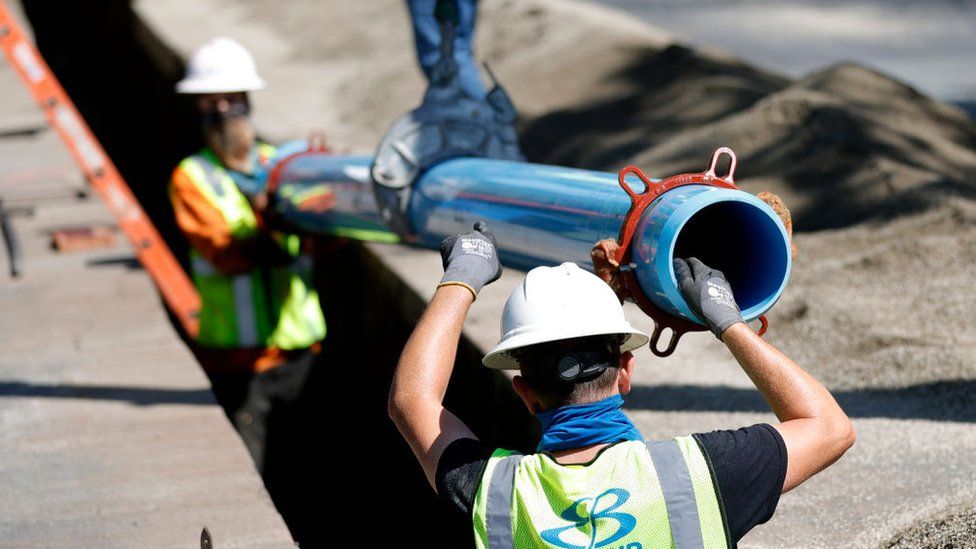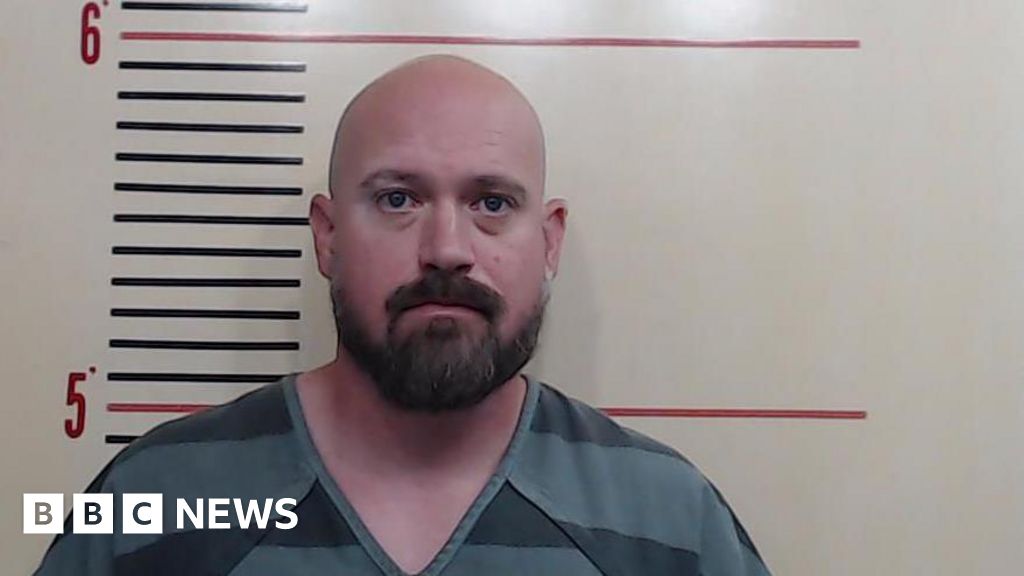ARTICLE AD BOX
 Image source, Getty Images
Image source, Getty Images
The Biden administration plan requires lead pipes to be replaced within 10 years
President Joe Biden's administration has announced a plan to rip out nine million lead water pipes across the US.
The 10-year proposal aims to shield communities from a neurotoxin that can cause permanent damage to the brain and nervous system, especially in children.
It would cost about $30bn (£24bn), the Environmental Protection Agency says.
The task is no small feat, but is a "really big step for the US", Rutgers University Professor Douglas Cantor tells the BBC.
He says it is a lofty goal, though "totally doable".
Under the proposed rule, the nation's utilities would be required to shoulder most of the project's cost, which may end up passed on to ratepayers.
The US had an opportunity to fix this problem once before, but did not seize the chance.
"And the problem has only gotten worse because of that," Prof Cantor says.
In the 1980s the US banned the use of any new lead pipes, but there were no efforts to take inventory of where the existing lead pipes were in use.
"The biggest problem with lead pipes historically, at least for the last 30 years or so, has been locating the pipes."
Thursday's announcement builds on federal requirements from a couple of years ago, which mandates that "states and municipalities begin inventorying all of their lead pipes and reporting that entire inventory by the end of 2024".
"Once the inventorying gets done, then we can actually move on to the replacement stage," says Dr Cantor.
The lecturer says the US has failed to keep step with what other countries have done to lower their lead-exposure levels. Canada's standard, for instance, is five parts per billion.
Aleem Maqbool on the Flint, Michigan, water crisis - and beyond
"What actually is a huge part of today is the EPA proposing to lower its lead action level, from 15 parts per billion to 10 parts per billion," Dr Cantor says.
Fifteen parts per billion was decided in the 1990s, not because of health requirements, but because of economic feasibility. And that number has not changed until now.
Even so, many public health advocates wanted the Biden administration to go further, since scientists agree there is no safe level of lead in drinking water.
"Lead does not naturally occur in water," says Dr Cantor. "It happens after it leaves the treatment plant, and it happens in the infrastructure that's been built for your home."
The overhaul may mean disruptive, large infrastructure projects - particularly if you live in older communities or in regions like the northeast and Midwest, which have the largest lead pipe concentrations.
Chicago has the most lead pipes out of any US city, with 400,000 of them.
Because lead affects children more severely than adults - from a developmental standpoint - young people will benefit the most from this lead pipe replacement, says Dr Cantor.
"I do hope that Americans will understand that if some of the larger projects come to their communities - that it's in their interest, in their children's interests - that we get it done," Dr Cantor says.
"If we do achieve 100% lead pipe replacement, there's no reason that numbers should not be set at zero after that."

 1 year ago
35
1 year ago
35








 English (US) ·
English (US) ·